A Step-by-Step Guide: Make Healthcare Marketing Content More Engaging
There’s no shortage of healthcare marketing content out there, but its lack of variety results in a bland sea of sameness. What there is a shortage of is fresh, innovative content, the irresistible kind that hooks HCPs and patients.
You have a stocked reservoir of assets, but to boost quality engagement, you need to leverage it in a new way.
It’s time to think outside the box and put your best digital foot forward.
This guide will take you through the six steps to successfully make healthcare marketing content more engaging. By the end, you’ll be ready to breathe new life into your existing materials, taking your marketing game to the next level.
Step One: Take inventory of existing materials
To begin improving your healthcare marketing content, you have to take stock of what you already have. Gather your print pieces, IVAs, HCP/patient resources, videos, and any other assets you’ve developed. This will lay the groundwork for change.
Repurpose your content to make it more engaging to your audience, maintaining key messaging.
Which messages do you want to emphasize?
Highlight the messages within your existing materials that are critical for future campaigns, and be sure to include references so you can seamlessly pull them into your new materials.
Once you’ve determined which materials are key to any future developments, keep them in a convenient content library. Think of it as modular content on tap for any digital experiences and non-personal promotion you create.
Step Two: Rethink the flow of your messages to bring them to life in a story format
Firstly, why should you utilize a story format?
We tell stories every day to connect with peers and make sense of the world around us. Storytelling is at the core of effective communication.
Storytelling marketing has emerged as a necessity. It reaches customers in a way that inauthentic messaging and hard, data-loaded content can’t.
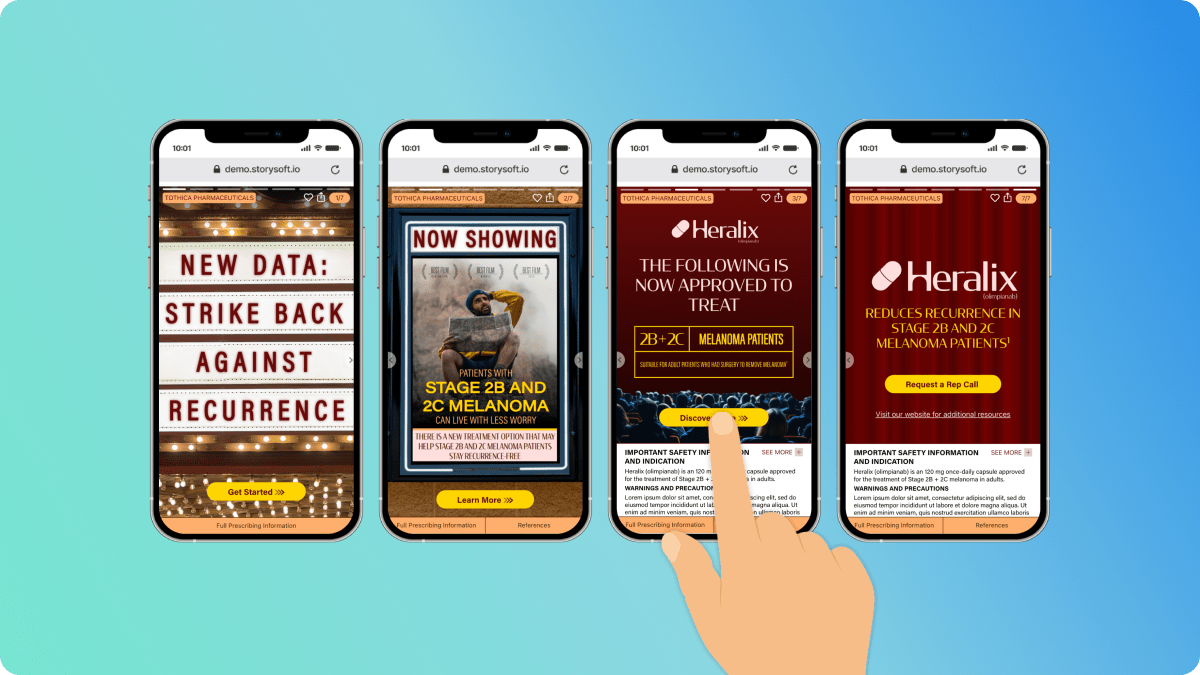
The components of a strong story
Every good story starts with a hook.
This is what immediately captures an audience’s attention. The hook might introduce the stakes of the story, state something shocking, reveal something new, etc.
For example, your hook might involve the percentage of patients living with a particular condition. Or perhaps you have exciting new data to share, in which case you can lead with what feels like an exclusive to convince your audience to go deeper into your story to uncover the data and what it means for the healthcare space.
Another hook could be a provocative question to get your audience thinking.
If you don’t hook your audience, they’ll drop like flies, not even giving your brand a chance.
We see an example of this in the high drop-off rates on brand websites.
Another important component of a great story is emotion-evoking scenes and language. If a story doesn’t make you feel anything, it’s not doing its job. The point of a story is to draw emotion from an audience. We are helpless to the insistent pull of a story’s tide.
Evocative storytelling makes the story feel real, whether it is or not. We buy into it if it’s told well. It’s because of this that storytelling humanizes its subjects.

Pharma doesn’t typically succeed at this, prioritizing data and facts over emotion.
As humans, we act on emotion every day. It drives us, data and facts providing guidance. Because of this, pharma should flip-flop its approach to making healthcare marketing content more engaging, relying on emotion-evoking storytelling to do the heavy lifting.
Humanization primes empathy. In the case of patient storytelling, we become receptive to story messaging when we see patients as multi-dimensional people with hopes, dreams, fears, etc.
Finally, stories require detail to make an impact.
Your audience doesn’t care about the woman with breast cancer, as apathetic as that sounds, they care about the doting mom with breast cancer who loves reading cozy mysteries and adds gummy worms to her kids’ popcorn on Friday movie nights. A 2D character becomes 3D, your audience stepping into their shoes.
Rearrange and tweak existing messages with the help of emotion-evoking language to weave into a story-first flow.
Step Three: Refine the user experience to make healthcare marketing content easy to consume
What does refining your healthcare marketing content for easy customer consumption entail? Making it snackable and mobile-optimized.
Let’s start with snackable.
It’s no secret that our attention spans are dwindling. This doesn’t mean we can’t consume bulkier content, but we’re only willing to do so if we’re invested and feel it’s worth our time.
People still spend hours watching TV, playing video games, reading, and so on, but marketing content doesn’t fall into the same category. It’s not a pleasurable pastime. Often, it’s seen as an obstacle, the thing standing between someone and a mindless but entertaining YouTube video of celebrities eating hot wings or unlikely animal friendships.
This is why marketing content can’t afford to be meandering.
It has to be bite-sized and convenient to consumers who see any minor inconvenience as a reason to remove themselves from an experience.
Keep only what is needed.
Channel minimalism to ensure you don’t bog down your audience.
Oftentimes we try to stuff every message into every piece of healthcare marketing content. It’s not effective. To see massive blocks of texts is daunting. No one has time for that. Your audience will skim, at most, and potentially absorb nothing or only the less crucial messages.
Less text puts you in control of message absorption. If you hit your audience with a snappy one-liner, that will be what stands out to them by default, versus if you slam them with wordy paragraphs.
By hooking your audience with that first concise chunk of messaging, they’ll be amenable to interacting with more of your brand experiences, ultimately consuming all of the messages you wanted them to initially.
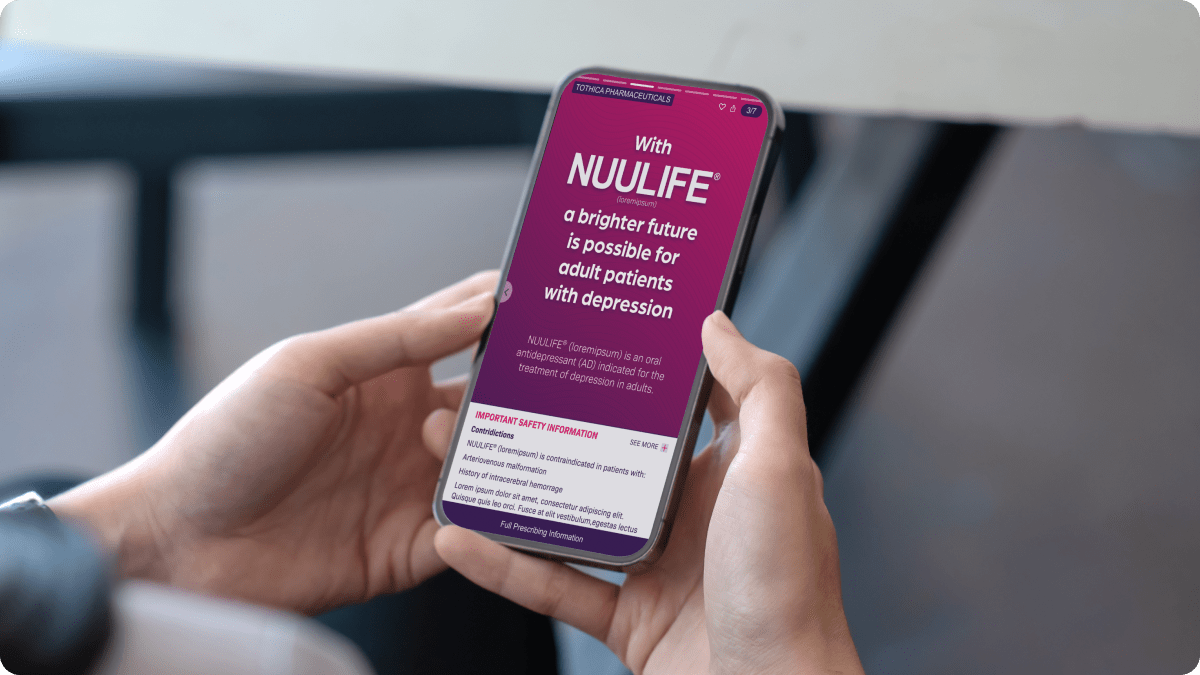
Next, you want to leverage mobile-first design.
Modern marketing content especially should be optimized for mobile view. Mobile = convenient. We’re not always at our computers, but most of the time, we have quick access to our phones.
Snackable, mobile-optimized content is the ace you need to captivate and activate your audience.
Just look at the success of platforms like Instagram. Set your healthcare content up for the same success by designing it to mirror what HCPs and patients already know, trust, and enjoy.
That being said, all content should still be responsive so that people can consume it on any device.
Step Four: Build an immersive, interactive digital experience
Now that your healthcare marketing content is updated, refined, and ready to deepen HCP and patient engagement, it’s time to put it all together to create an immersive digital experience.
Blend your audiovisual assets, story-based messaging, and data into a social media-style experience that’s both personalized and interactive. We call this experience a digital Story.
Personalization is not seen as a luxury any longer. It’s a given. You have to meet those customer expectations.
One way to do so is to let HCPs and patients choose their own adventure. Personalization can happen in real time if you present users with choices. By allowing them to shape their experience, they’ll be fed information that’s most relevant to them, deepening engagement.
Interactivity enables high-value, active engagement rather than a more passive engagement (like watching a standalone video). Users become valuable participants, a vital piece of your Story.
What does interactivity look like beyond simply clicking from Story page to page? Surveys, sliders, and so on. Are there questions you’d like the answers to? Inject a survey into your Story to gain audience insight. Add sliders for users to drag across the screen to reveal figures or images. Get creative.
Personalization + interactivity + storytelling = a marketing match made in heaven.
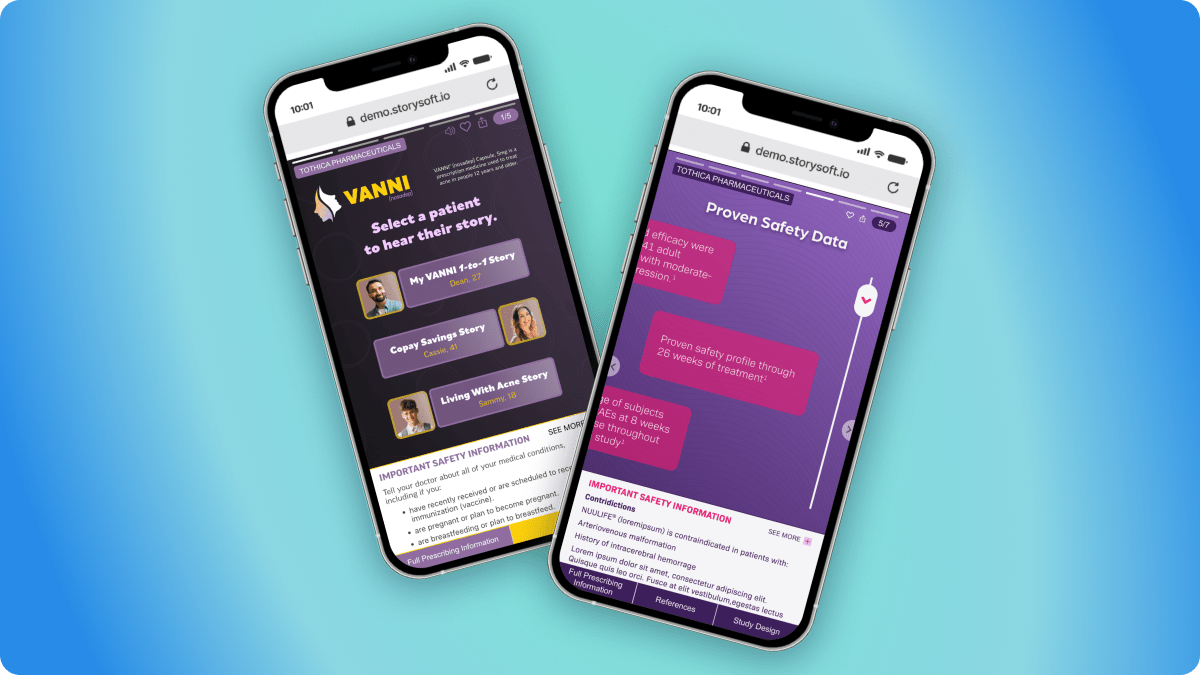
Let’s briefly jump back into our storytelling discussion to explore its value in the digital world.
Storytelling lends itself to a type of two-way engagement. The storyteller and audience are inextricably linked while a story is being told. The audience reacts to the story and the storyteller reacts to the audience.
How does this relationship manifest in digital storytelling?
The digital story itself reacts to its audience, adapting to fit user preferences, the story flow changing depending on the actions a user takes.
How can you build your own digital experience?
One new user-friendly tool that simplifies digital experience creation for marketers and agencies is our STORYSOFT Story Builder.
Drop in your audiovisual assets, story-based messaging, pharma-compliant components like ISI, and hit publish. (Yes, our Builder has built-in compliance features, there to make your life easier.)
Your web-based digital experience will be hosted on a unique link like a landing page so you can share it across channels. Plus, HCPs and patients won’t have to download a thing. It’s frictionless!
Step Five: Create a channel driver strategy
There are four key drivers we recommend for sharing your Stories: direct to HCP/patient, website embed, rep-delivered campaigns, and conference experiences.
Direct to HCP/patient
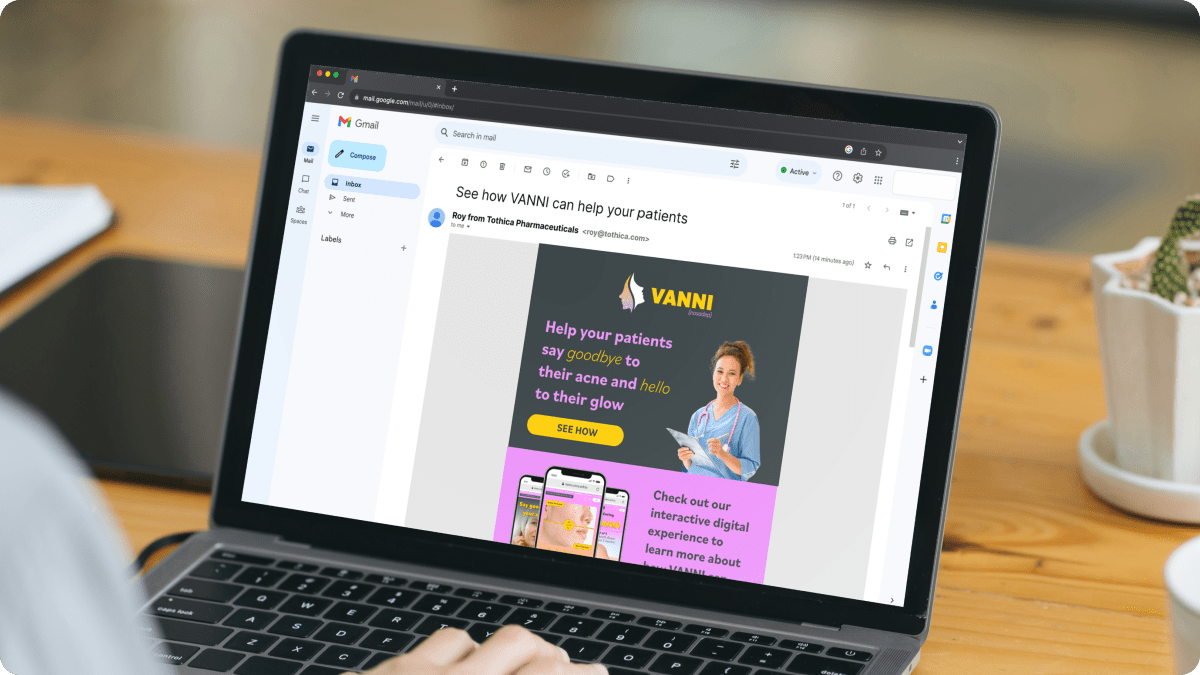
Deliver Stories about patient cases, unmet needs, and so on directly to HCPs and patients via ads, emails, QR codes, etc.
Think of this as the foundational driver. It’s simple and effective.
For example, you could share Stories on social media (organic and paid) or run banner ads on third-party publisher sites.
Stories bolster these tactics, deepening engagement.
Why launch a static ad on, say, LinkedIn, when you can share an interactive Story? It’s a no-brainer. Even personalize the Story content based on UTM parameters passed over from the ad to the Story.
Website embed
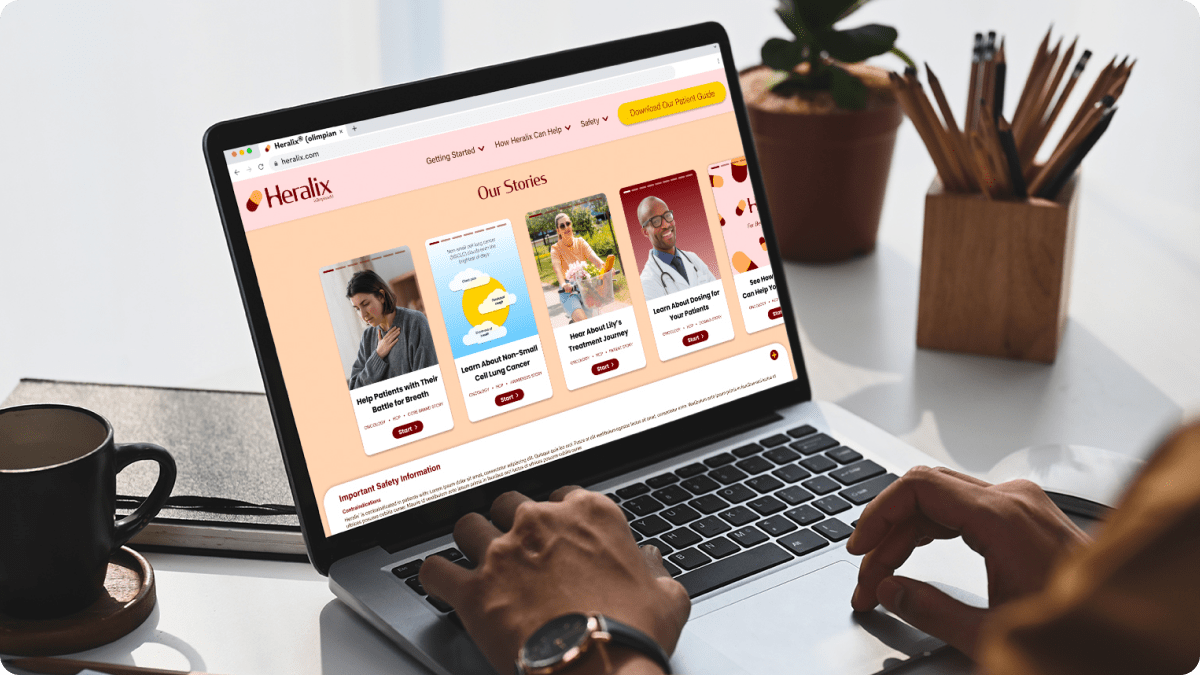
Think about all of the time, money, and effort spent driving audiences to your HCP and patient websites. Now think about the impact you can make on the brand if you mitigate the website drop-off we discussed earlier, getting visitors to stay longer, consume more key messages, and engage in high value actions like downloading key resources, enrolling in programs, requesting rep calls or samples, etc.
Adding interactive Stories to your website can help you achieve this level of immediate and measurable impact.
Elevate your website with embedded Stories. They’ll keep HCPs and patients on site longer, unable to resist clicking through.
Visitors scroll or swipe, depending on their preferred device, making for a smooth, social media-style experience.
The icing on the cake? You can publish new Stories to your website without disrupting existing layouts & designs whenever you want!
Rep-delivered campaigns
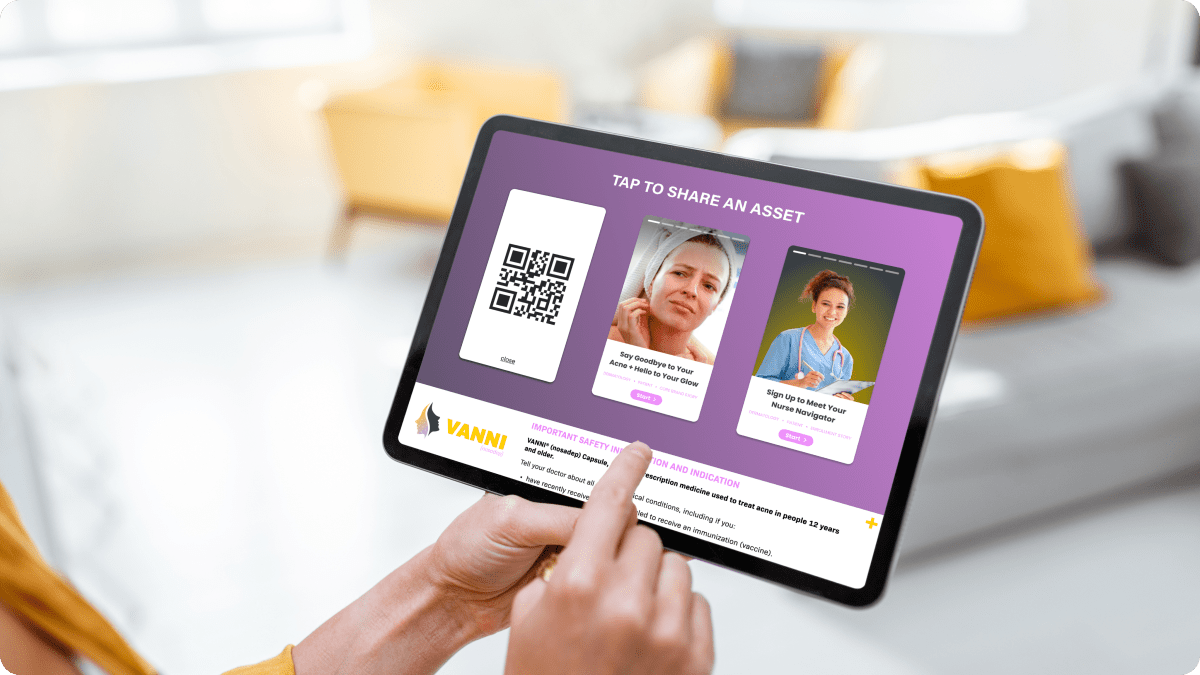
Rep access to HCPs has seen a great decline, and even when reps get to see HCPs, time with them is scarce, so how can healthcare sales reps still make an impact?
Give reps access to branded Stories via their CLM presentation. At the close of a sales call, reps can choose a relevant Story to share with the HCP.
The rep taps their device to generate a QR code for the Story and the HCP scans it with their phone. It’s too easy.
If the HCP doesn’t want to scan the QR code, the rep can display the Story on their own device instead.
It’s the powerful sales call extension you need to jumpstart rep impact.
Conference experiences
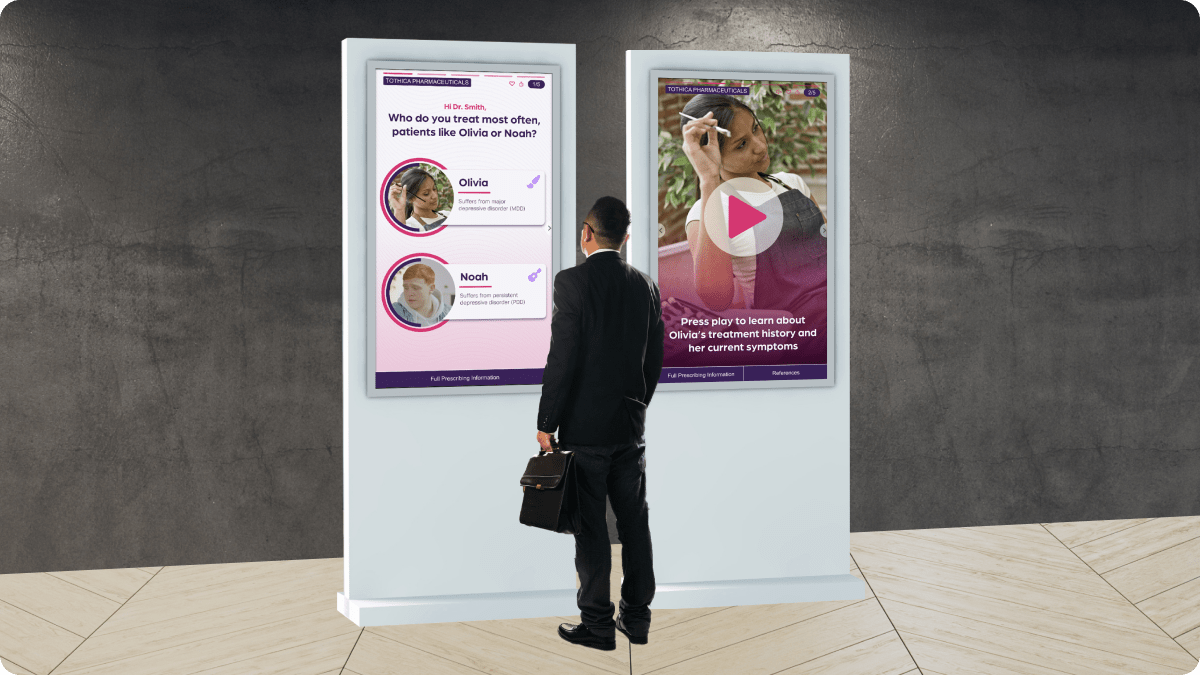
Take Stories to conferences! There’s no need to break the bank creating one-off custom experiences.
Build Stories aligned to your conference strategies and set engagement goals.
You can run your Stories on touch-screen monitors in your booth or plaster QR codes onto conference posters for HCPs to scan as they explore the floor.
You can even set it up so that activated HCPs will receive automated email follow-ups, keeping your brand top of mind.
Step Six: Collect actionable insights
When possible, collect customer-level data to feed omnichannel campaigns. Then use tools like our analytics to provide meaningful and actionable insights around what’s working and what’s not. Drawing actionable insights from your data drives constant refinement.
Why are actionable insights vital to precision targeting?
Actionable insights open the door to a deeper understanding of your audience so you can refine your messaging for more precise targeting at a moment’s notice, increasing message effectiveness.
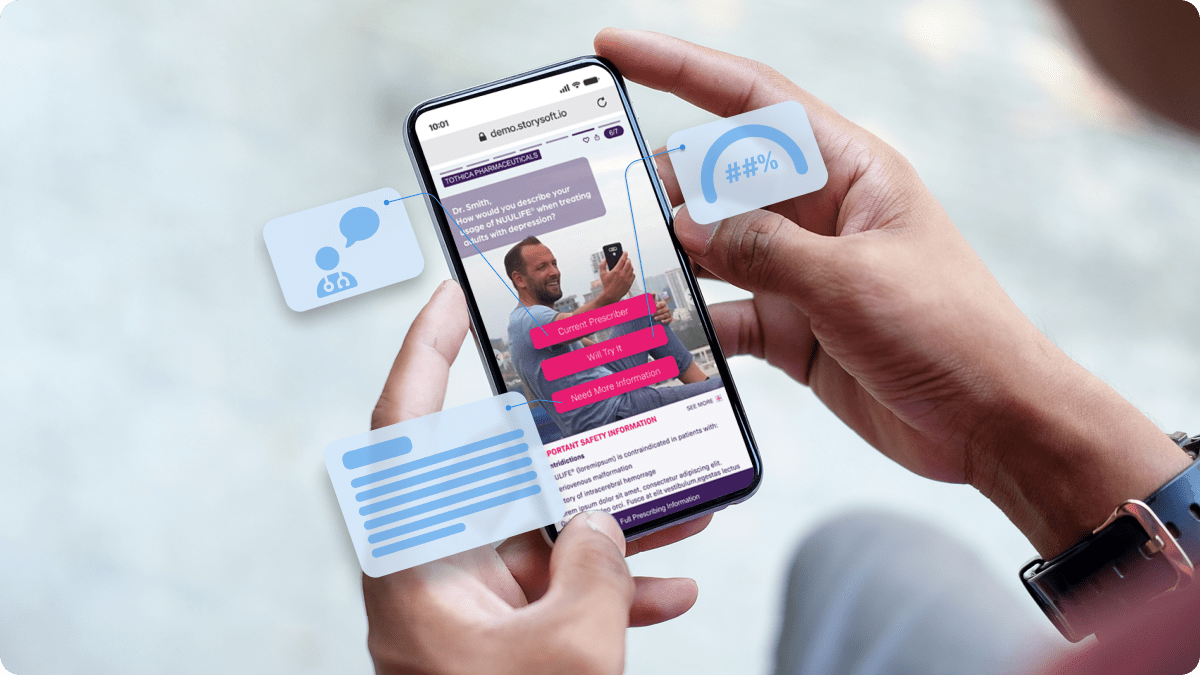
Actionable insights eliminate doubt. There’s no need to guess when you can confirm which messages are succeeding.
Put your finger to the pulse of message effectiveness. You’ll be tapped into why certain messages resonate more deeply with your audience than others, allowing you to make improvements as needed.
Never guess about the “why.”
There you have it, to make healthcare marketing content more engaging, you need to transform the assets you already have into snackable, responsive digital experiences that harness the power of emotion-evoking storytelling.
Once you’ve done that, drive HCPs and patients to your Stories with one of our four recommended drivers and collect customer-level data to push continual message refinement, your campaigns getting smarter with each update.
Engaging healthcare marketing content is at your fingertips. Start creating now.
Create captivating digital experiences with STORYSOFT. Learn more.
Book a Demo
See how to bring personalized digital experiences to life for your brand
During the call you will:
- Hear how it works
- See example digital Stories
- Walk through the analytics
- Get your questions answered